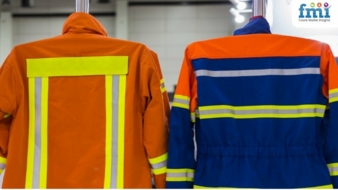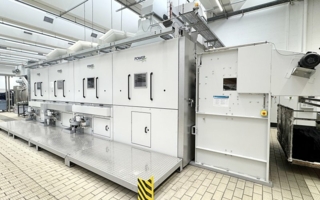07/08/2023 – Future Market Insights
Global fire-resistant fabrics market
The rapid growth of industries such as oil and gas, chemicals, and manufacturing has created a higher demand for fire-resistant fabrics. These industries often involve hazardous processes and materials, making fire-resistant fabrics crucial for worker safety.
According to Future Market Insights, the market for fire-resistant fabrics is projected to exhibit significant growth, reaching a value of 6.1 b US-Dollars by the end of the forecast period in 2033. Here are some key factors contributing to this projection: Innovations in flame retardants, weaving techniques, and fabric blends have improved fire resistance while maintaining comfort. Aramid fibers like Nomex and Kevlar have resulted in durable, strong, and fire-resistant fabrics. The United States stands out in this market, with its focus on worker safety and strict regulations contributing to its dominance. North America is projected to experience a 6.2% compound annual growth rate (CAGR) in the fire-resistant fabrics market, reaching a value of 1.1 b US-Dollars in the coming years.
Technological Innovations and Tailored Solutions
Maufacturers work to enhance performance, comfort and durabilit, catering to the specific needs of North American industries. Sustainability, including recycled fibers, bio-based materials, and environmentally friendly production processes, are said to play a key-role in fabric development.
The role of startups for future growth
Startups like PyroTex, Pvilion, and Basofi Fibers are shaping the fire-resistant fabrics market through diverse marketing strategies. These include new product launches, geographical expansion, mergers, acquisitions, partnerships, and collaborations. PyroTex, established in 2017, is a startup that focuses on flame-resistant coatings and treatments to enhance fabric properties, bridging safety and performance gaps. Pvilion, founded in 2011, integrates technology and sustainable design into its fire-resistant fabrics, catering to various industries. Basofi Fibers, a startup since 2006, develops high-performance fire-resistant fibers and fabrics, particularly for transportation, aerospace, and military applications.
Key players in the fire-resistant fabrics market
DuPont de Nemours, Inc., Arvind Ltd., and others, drive growth by improving productivity and quality. These players emphasize research and development for effective material composition. DuPont, renowned for its Nomex and Kevlar fabrics, holds a significant presence. Teijin Aramid's Twaron fiber is used in fire-resistant fabrics for protective clothing. PBI Performance Products utilizes its PBI (Polybenzimidazole) fiber to manufacture fire-resistant fabrics for firefighting gear, military use, and industrial protective clothing.
To sum up: As innovation continues to drive the sector, startups and established players are helping to shape the market`s growth. The role of flame retardant fabrics in defence, pulbic safty, and various industries is said to become increasingly important.




